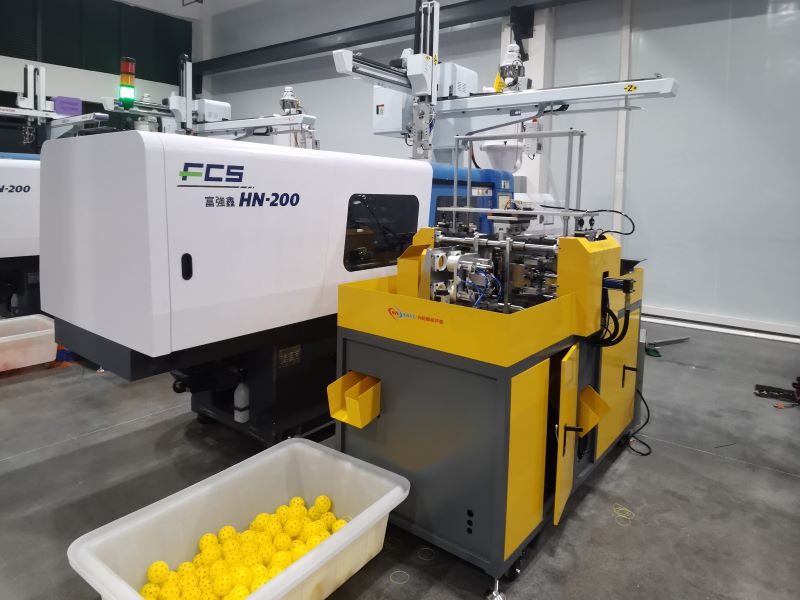In racket manufacturing, precision is key to producing high-quality products. However, one of the most common issues that manufacturers face is rejected rackets due to defective hemming-loose threads and gaps in the fabric. These defects not only lead to increased rejection rates but also waste valuable time and resources.
1. The Impact of Loose Threads and Gaps in Racket Manufacturing
Loose threads and gaps in the fabric are a major cause of racket rejection. These imperfections often occur during the hemming process when the stitching does not hold the fabric securely, or the fabric shifts during stitching. As a result, manufacturers are left with imperfect products that cannot be sold. This leads to higher production costs, increased waste, and a damaged reputation for quality.
The root cause of these issues lies in manual hemming processes, where human error can easily lead to inconsistencies. However, with automation, manufacturers can eliminate these issues and achieve consistent, high-quality results.
2. Manual Hemming: Time-Consuming and Error-Prone
In manual hemming, workers must carefully stitch each racket fabric by hand, which is both time-consuming and prone to errors. The process is tedious, and small mistakes such as missed stitches or uneven tension can result in defects. This not only affects the appearance and functionality of the racket but also causes delays in production.
Automating the hemming process can significantly reduce the risk of human error. With automated solutions, manufacturers can ensure that each racket is hemmed to perfection, meeting strict quality standards.

3. Increased Rejection Rates Due to Inconsistent Hemming
Inconsistent hemming results in rackets that do not meet the required specifications. These inconsistencies can be subtle but are often noticeable in the final product, leading to increased rejection rates. Even slight gaps or loose threads can make a racket unsuitable for sale, reducing the overall production yield.
Automated hemming machines provide precise control over stitching, ensuring consistent results and reducing the likelihood of defects. This leads to fewer rejected rackets and a more efficient manufacturing process.
4. The Cost of Rejection: Wasted Resources and Time
Rejection of defective rackets wastes not only raw materials but also valuable time. The cost of labor and materials involved in producing rejected rackets can quickly add up, affecting the profitability of the entire production line. Additionally, the time spent reworking or discarding defective products could be better spent on producing new, high-quality rackets.
By implementing automated hemming systems, manufacturers can drastically reduce the risk of rejections. This leads to more efficient use of materials and labor, lowering production costs.
Technical Solutions: How Automated Hemming Solves These Challenges
1. Precision Stitching for Consistency
Automated hemming machines provide precision stitching with consistent tension and alignment. This ensures that each racket is hemmed perfectly every time. These machines can adjust stitch length and tension automatically, depending on the material being used, ensuring a high-quality finish without the risk of loose threads or gaps.
【 A study by the Textile Machinery Research Association found that automated hemming machines reduce defects by up to 40% compared to manual processes.】
2. Increased Production Speed
Automating the hemming process significantly increases production speed. Unlike manual hemming, where workers can only process a limited number of rackets per hour, automated machines can operate continuously, producing a high volume of rackets in a shorter time frame. This leads to higher throughput and a faster turnaround time for orders.
【 According to industry reports, automated hemming can increase production speed by up to 60%, allowing manufacturers to meet tight deadlines more efficiently.】
3. Reduced Labor Costs
By automating the hemming process, manufacturers can reduce their reliance on manual labor. This not only helps in reducing labor costs but also minimizes the risk of human error, resulting in fewer defective products. Additionally, automated systems can work around the clock, ensuring consistent production without the need for overtime or additional labor.
【Manufacturers using automated hemming systems report a reduction in labor costs by up to 30%, contributing to a more cost-effective production process.】
4. Customizable Settings for Different Materials
Automated hemming machines are designed to handle a wide variety of materials, from lightweight fabrics to heavy-duty textiles used in racket construction. These machines can be easily adjusted to accommodate different fabric types, ensuring that the stitching is appropriate for each material. Whether you're working with nylon, polyester, or other synthetic materials, automated hemming systems can be tailored to deliver optimal results.
Product Comparison: Automated Hemming Systems vs. Manual Hemming
| Feature | Automated Hemming Systems | Manual Hemming |
|---|---|---|
| Speed | Up to 60% faster | Slower, limited by human speed |
| Consistency | High precision, no variations | Prone to inconsistencies |
| Error Rate | Low, minimal defects | High, prone to mistakes |
| Cost | Higher initial investment, lower long-term costs | Lower initial cost, higher ongoing labor costs |
| Material Handling | Adaptable to various fabrics | Limited flexibility |
Conclusion:
Automated hemming is a game-changer for racket manufacturers looking to improve production efficiency, reduce rejections, and enhance product quality. By eliminating loose threads and gaps, automated systems ensure that each racket meets the highest standards. The result is fewer defects, reduced labor costs, faster production speeds, and ultimately, higher profits.
For more information on automated hemming systems and how they can improve your manufacturing process, visit our [product category]

